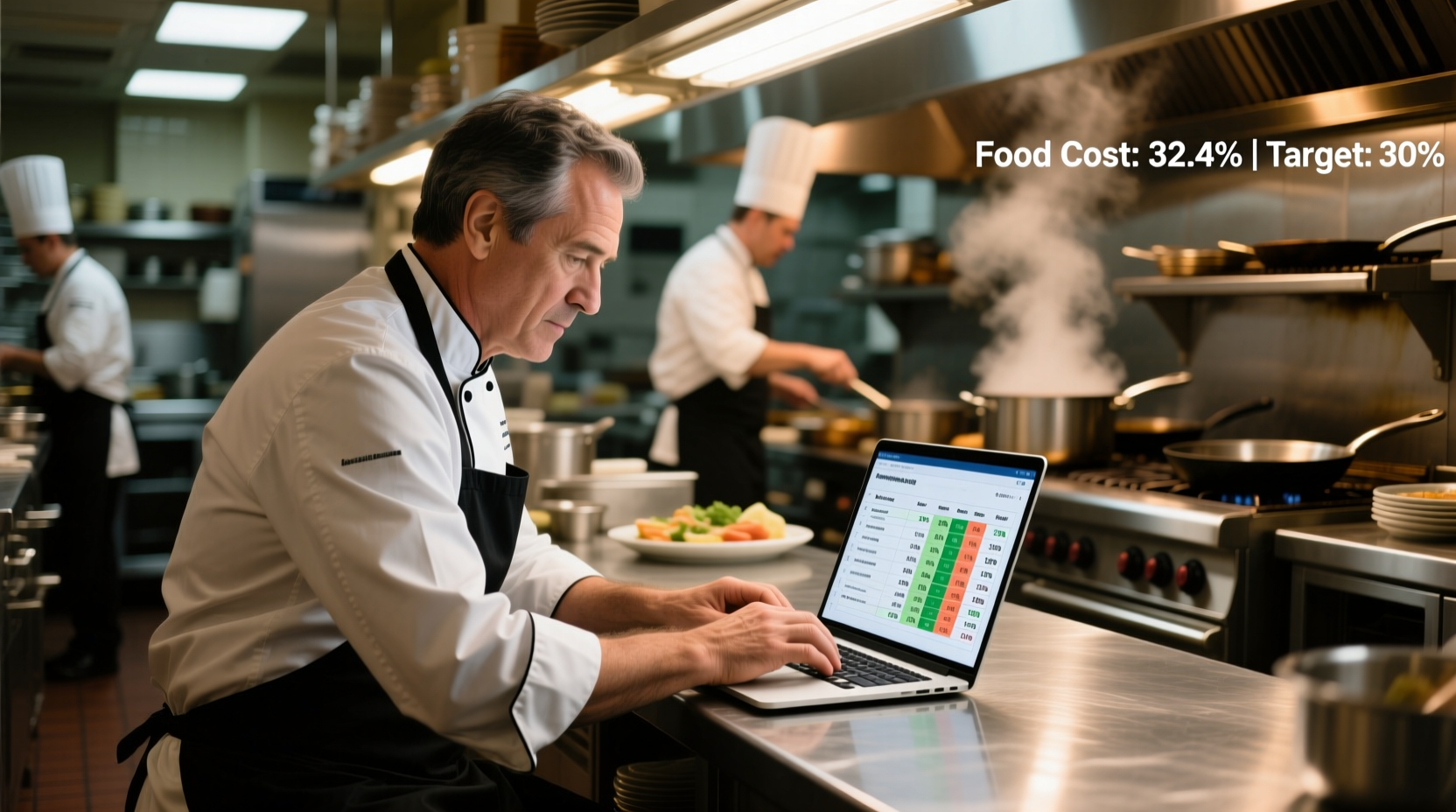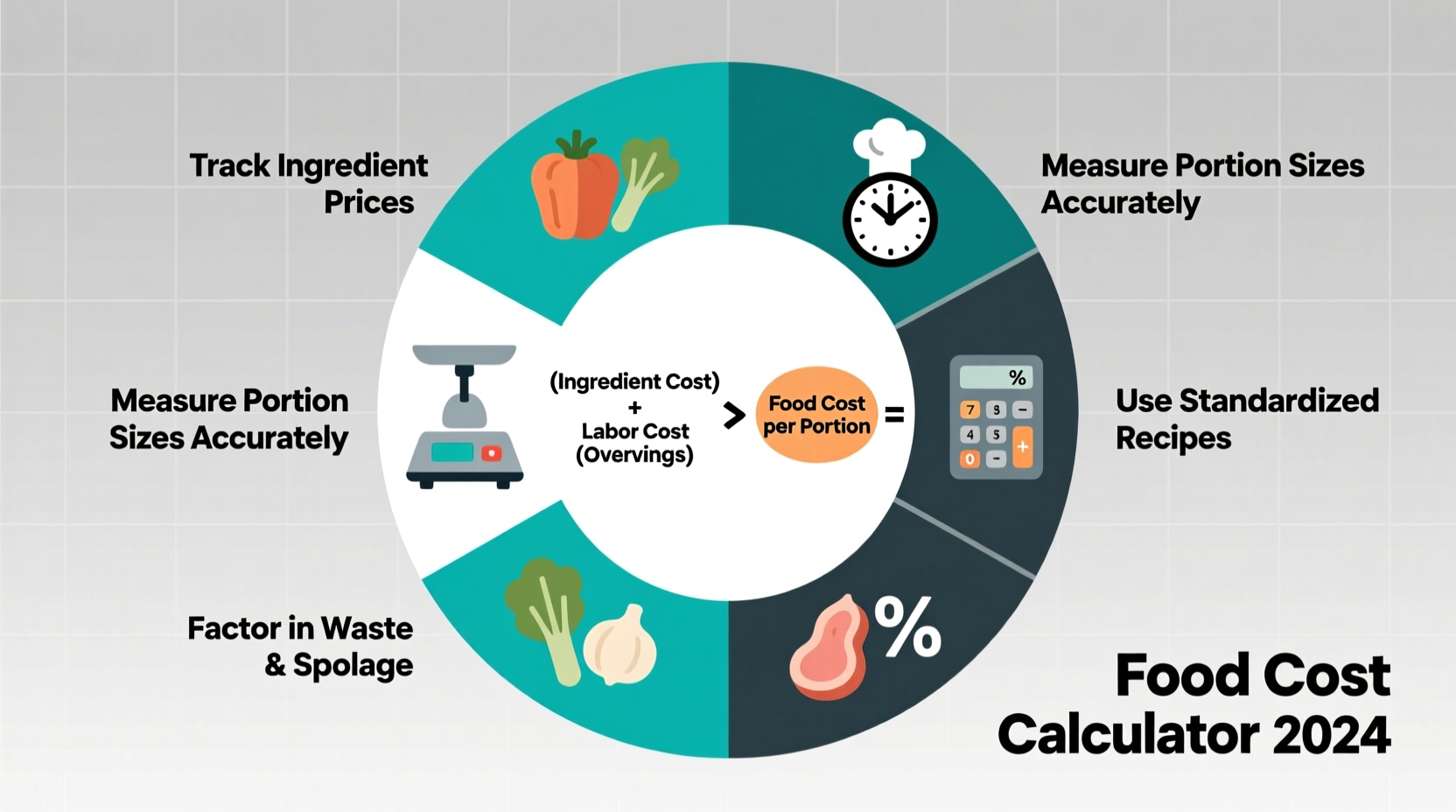Understanding how to figure food cost accurately separates thriving food businesses from those struggling to stay afloat. Whether you're launching a new restaurant, managing a food truck, or optimizing an existing menu, precise food costing determines your pricing strategy, profit margins, and long-term viability. This guide delivers the exact methodology industry professionals use, complete with real-world examples and actionable templates you can implement immediately.
Why Food Cost Percentage Matters More Than You Think
Food cost percentage represents the relationship between what you spend on ingredients and what you earn from menu sales. While many operators focus solely on food cost dollars, the percentage metric provides crucial context for decision-making. According to the National Restaurant Association's 2024 Financial Performance Report, restaurants with food costs exceeding 36% face significantly higher closure rates within three years compared to those maintaining costs below 32%.
| Restaurant Type | Industry Average Food Cost | Profitability Threshold | Source |
|---|---|---|---|
| Fast Casual | 28-32% | <30% | NRA 2024 Report |
| Fine Dining | 30-38% | <35% | RestaurantOwner.com Survey |
| Food Trucks | 25-30% | <28% | USDA Mobile Vending Study |
| University Dining | 20-25% | <23% | American College Food Services |
This fact comparison table shows how food cost targets vary across food service segments. The National Restaurant Association (nra.com/financial-benchmarks) tracks these metrics quarterly, revealing that businesses exceeding their segment's profitability threshold typically struggle with inconsistent portioning, poor inventory management, or inadequate menu engineering.
Your Step-by-Step Food Cost Calculation Process
Follow this proven methodology used by successful restaurant operators to figure food cost accurately. This process works whether you're conducting monthly reviews or implementing daily tracking systems.
Phase 1: Gather Essential Data
Before calculating, collect these critical components:
- Beginning inventory: Total value of all food stock at period start
- Purchases: All food acquisitions during the period
- Ending inventory: Total value of remaining stock at period end
- Total food sales: Gross revenue from food items only
Many operators fail by omitting transfer records between locations or forgetting internal staff meals. The Uniform System of Accounts for Restaurants (USAR) standard requires tracking these as inventory reductions to maintain accuracy.
Phase 2: Calculate Actual Food Cost
Apply this universal formula to figure food cost:
Beginning Inventory + Purchases - Ending Inventory = Food Cost
Example: $12,500 (beginning) + $8,200 (purchases) - $9,300 (ending) = $11,400 food cost
Now determine your food cost percentage:
(Food Cost ÷ Total Food Sales) × 100 = Food Cost Percentage
Continuing the example: ($11,400 ÷ $38,000 sales) × 100 = 30% food cost

Phase 3: Analyze and Adjust
Understanding your food cost percentage triggers actionable insights. If your calculation shows 34% food cost in a quick-service environment, investigate these common culprits:
- Portion creep during service
- Unrecorded waste or spoilage
- Inconsistent recipe execution
- Supplier price increases not reflected in menu pricing
The Cornell University School of Hotel Administration notes that a 2% reduction in food costs equals a 20% increase in profits for restaurants operating at typical 10% net margins. This dramatic impact explains why precise food costing remains fundamental to restaurant success.
Advanced Food Costing Considerations
Basic calculations provide essential insights, but sophisticated operators incorporate these additional factors when figuring food cost:
Menu Engineering Implications
Not all menu items should carry identical food cost percentages. High-profit margin items often maintain 20-25% costs while signature dishes might run 35-40%. The key is balancing your menu so overall food costs stay within target range. Restaurants using menu engineering principles typically achieve 3-5% better overall food costs than those with uniform pricing approaches.
Contextual Limitations of Standard Food Costing
Standard food costing formulas require modification in specific scenarios:
- Seasonal businesses: Summer-only beach restaurants should calculate costs weekly rather than monthly
- Special event catering: Each event requires separate costing due to variable menu composition
- Hyper-local sourcing: Farms with direct supplier relationships must account for variable yields
The USDA Food Costing Guide emphasizes that businesses with significant seasonal fluctuations need dynamic costing models rather than static monthly calculations to maintain accuracy throughout operating cycles.
Evolution of Food Cost Management Practices
Food costing methodology has evolved significantly over the past decade. Traditional manual inventory systems have given way to integrated POS solutions that track ingredient usage in real-time. According to Technomic's 2024 Restaurant Technology Report, 68% of full-service restaurants now use automated inventory systems compared to just 27% in 2018. This technological shift has reduced food cost calculation errors by an average of 4.2 percentage points while freeing up 12-15 staff hours monthly previously spent on manual counts.
Common Food Cost Calculation Mistakes to Avoid
Even experienced operators make these critical errors when figuring food cost:
- Mixing beverage and food costs - Always calculate these separately as beverage margins differ significantly
- Ignoring labor in recipe costing - While not part of food cost percentage, preparation time affects overall dish profitability
- Infrequent inventory counts - Monthly counts miss weekly fluctuations; high-turnover establishments benefit from weekly counts
- Not adjusting for waste - Edible trim and spoilage must factor into actual usage calculations
Restaurant consultants consistently identify inconsistent inventory timing as the most prevalent error. Counting inventory at different times of day creates significant valuation discrepancies due to varying stock levels throughout service periods.
Implementing Your Food Cost System
Start with these practical steps to establish reliable food costing practices:
- Standardize recipes with exact measurements for every menu item
- Conduct baseline inventory on consistent schedule (e.g., every Monday morning)
- Track all inventory movements including transfers, waste, and staff meals
- Calculate weekly for first month to establish patterns before moving to monthly
- Review with management team to identify improvement opportunities
For immediate implementation, download our free food cost calculator template that automatically computes your percentage and compares it against industry benchmarks. This tool eliminates manual calculation errors while highlighting potential problem areas through color-coded alerts.
Frequently Asked Questions
What's the difference between food cost and food cost percentage?
Food cost refers to the actual dollar amount spent on ingredients, while food cost percentage expresses this cost as a proportion of food sales revenue. For example, $10,000 in food costs against $30,000 in sales equals 33.3% food cost percentage. The percentage metric provides meaningful context for comparing performance across different time periods or business sizes.
How often should I calculate food cost?
Most successful restaurants calculate food cost weekly during initial implementation, then move to monthly calculations once systems stabilize. High-volume or quick-service establishments benefit from weekly tracking due to faster inventory turnover. Seasonal businesses should calculate costs weekly during peak seasons and monthly during slower periods to maintain accuracy.
Should I include labor in food cost calculations?
No, labor costs belong to a separate category called prime cost (food cost + labor cost). Food cost percentage specifically measures ingredient costs against food sales. Including labor would distort this critical metric and prevent meaningful comparison against industry benchmarks. However, when analyzing overall dish profitability, you should consider both food and labor components.
How do I handle recipe variations when calculating food cost?
Track each recipe variation separately in your costing system. For example, if you offer chicken dishes with grilled, fried, and roasted preparations, calculate each method's specific costs. Many operators create 'modifier' costs for common variations (e.g., +$0.75 for gluten-free preparation) to maintain accurate costing without excessive complexity. Standardized recipes should specify exact measurements for each variation to ensure consistent costing.
What's a good food cost percentage for a new restaurant?
New restaurants should target 28-32% food cost percentage during the first year, recognizing that initial costs may run higher due to learning curves and system implementation. According to RestaurantOwner.com's startup data, restaurants achieving food costs below 33% within six months have a 72% three-year survival rate compared to 41% for those exceeding 36%. Focus on consistent measurement rather than perfection during your launch phase.











 浙公网安备
33010002000092号
浙公网安备
33010002000092号 浙B2-20120091-4
浙B2-20120091-4